

具体描述
内容简介
本书是著名计算机专业作家William Stallings的经典著作之一,内容涉及基本的数据通信原理、各种类型的计算机网络以及多种网络协议和应用,覆盖面广,信息量大。这一版对上一版内容做了许多改进,使新版对通信领域各专题的阐述更清晰、更紧凑。同时,新版补充了双绞线传输标准、宽带因特网接入、第四代移动无线网络、虚拟局域网、移动IP等内容,修订了高速以太网、无线局域网、MPLS的相关内容,彻底重写了安全相关章节。此外,本书还包括术语表、参考文献、缩写词对照表。每章都附有习题和推荐读物,以便读者进一步阅读。目录
CONTENTSChapter 0 Reader’s and Instructor’s Guide 1
0.1 Outline of the Book 2
0.2 A Roadmap for Readers and Instructors 3
0.3 Internet and Web Resources 5
0.4 Standards 6
PART ONE OVERVIEW 8
Chapter 1 Data Communications, Data Networks, and the Internet 8
1.1 Data Communications and Networking for Today’s Enterprise 9
1.2 A Communications Model 16
1.3 Data Communications 19
1.4 Networks 22
1.5 The Internet 25
1.6 An Example Configuration 30
Chapter 2 Protocol Architecture, TCP/IP, and Internet-Based Applications 32
2.1 The Need for a Protocol Architecture 33
2.2 A Simple Protocol Architecture 34
2.3 The TCP/IP Protocol Architecture 38
2.4 Standardization within a Protocol Architecture 46
2.5 Traditional Internet-Based Applications 49
2.6 Multimedia 50
2.7 Recommended Reading and Web Sites 53
2.8 Key Terms, Review Questions, and Problems 54
Appendix 2A The Trivial File Transfer Protocol 57
PART TWO DATA COMMUNICATIONS 62
Chapter 3 Data Transmission 62
3.1 Concepts and Terminology 64
3.2 Analog and Digital Data Transmission 75
3.3 Transmission Impairments 83
3.4 Channel Capacity 89
3.5 Recommended Reading and Web Site 93
3.6 Key Terms, Review Questions, and Problems 94
Appendix 3A Decibels and Signal Strength 97
Chapter 4 Transmission Media 100
4.1 Guided Transmission Media 102
4.2 Wireless Transmission 116
4.3 Wireless Propagation 124
4.4 Line-of-Sight Transmission 129
4.5 Recommended Reading and Web Sites 133
4.6 Key Terms, Review Questions, and Problems 134
Chapter 5 Signal Encoding Techniques 138
5.1 Digital Data, Digital Signals 141
5.2 Digital Data, Analog Signals 151
5.3 Analog Data, Digital Signals 162
5.4 Analog Data, Analog Signals 168
5.5 Recommended Reading 175
5.6 Key Terms, Review Questions, and Problems 175
Chapter 6 Digital Data Communication Techniques 180
6.1 Asynchronous and Synchronous Transmission 182
6.2 Types of Errors 186
6.3 Error Detection 186
6.4 Error Correction 196
6.5 Line Configurations 202
6.6 Recommended Reading 203
6.7 Key Terms, Review Questions, and Problems 204
Chapter 7 Data Link Control Protocols 208
7.1 Flow Control 210
7.2 Error Control 217
7.3 High-Level Data Link Control (HDLC) 223
7.4 Recommended Reading 230
7.5 Key Terms, Review Questions, and Problems 230
Appendix 7A Performance Issues 233
Chapter 8 Multiplexing 268
8.1 Frequency Division Multiplexing 243
8.2 Synchronous Time Division Multiplexing 249
8.3 Statistical Time Division Multiplexing 259
8.4 Asymmetric Digital Subscriber Line 266
8.5 xDSL 298
8.6 Recommended Reading and Web Sites 272
8.7 Key Terms, Review Questions, and Problems 273
Chapter 9 Spread Spectrum 276
9.1 The Concept of Spread Spectrum 278
9.2 Frequency-Hopping Spread Spectrum 279
9.3 Direct Sequence Spread Spectrum 284
9.4 Code Division Multiple Access 290
9.5 Recommended Reading and Web Site 294
9.6 Key Terms, Review Questions, and Problems 294
PART THREE WIDE AREA NETWORKS 298
Chapter 10 Circuit Switching and Packet Switching 298
10.1 Switched Communications Networks 300
10.2 Circuit-Switching Networks 302
10.3 Circuit-Switching Concepts 305
10.4 Softswitch Architecture 309
10.5 Packet-Switching Principles 310
10.6 Recommended Reading 320
10.7 Key Terms, Review Questions, and Problems 320
Chapter 11 Asynchronous Transfer Mode 323
11.1 The Role of ATM 325
11.2 Protocol Architecture 326
11.3 ATM Logical Connections 328
11.4 ATM Cells 333
11.5 Transmission of ATM Cells 339
11.6 ATM Service Categories 343
11.7 Recommended Reading and Web Sites 346
11.8 Key Terms, Review Questions, and Problems 347
Chapter 12 Routing in Switched Data Networks 350
12.1 Routing in Packet-Switching Networks 351
12.2 Examples: Routing in ARPANET 361
12.3 Least-Cost Algorithms 367
12.4 Recommended Reading 372
12.5 Key Terms, Review Questions, and Problems 373
Chapter 13 Congestion Control in Data Networks 377
13.1 Effects of Congestion 379
13.2 Congestion Control 384
13.3 Traffic Management 386
13.4 Congestion Control in Packet-Switching Networks 388
13.5 ATM Traffic Management 388
13.6 ATM?GFR Traffic Management 400
13.7 Recommended Reading 403
13.8 Key Terms, Review Questions, and Problems 404
Chapter 14 Cellular Wireless Networks 407
14.1 Principles of Cellular Networks 408
14.2 First-Generation Analog 422
14.3 Second-Generation CDMA 423
14.4 Third-Generation Systems 429
14.5 Fourth-Generation Systems 433
14.6 Recommended Reading and Web Sites 438
14.7 Key Terms, Review Questions, and Problems 439
PART FOUR LOCAL AREA NETWORKS 442
Chapter 15 Local Area Network Overview 442
15.1 Topologies and Transmission Media 443
15.2 LAN Protocol Architecture 449
15.3 Bridges 457
15.4 Hubs and Switches 465
15.5 Virtual LANs 469
15.6 Recommended Reading and Web Sites 474
15.7 Key Terms, Review Questions, and Problems 474
Chapter 16 Ethernet 477
16.1 Traditional Ethernet 479
16.2 High-Speed Ethernet 489
16.3 IEEE 802.1Q VLAN Standard 498
16.4 Recommended Reading and Web Sites 500
16.5 Key Terms, Review Questions, and Problems 500
Appendix 16A Digital Signal Encoding for LANs 503
Appendix 16B Scrambling 510
Chapter 17 Wireless LANs 513
17.1 Overview 514
17.2 Wireless LAN Technology 519
17.3 IEEE 802.11 Architecture and Services 521
17.4 IEEE 802.11 Medium Access Control 526
17.5 IEEE 802.11 Physical Layer 533
17.6 Recommended Reading and Web Sites 541
17.7 Key Terms, Review Questions, and Problems 542
PART FIVE INTERNET AND TRANSPORT PROTOCOLS 545
Chapter 18 Internet Protocols 545
18.1 Principles of Internetworking 546
18.2 Internet Protocol Operation 551
18.3 Internet Protocol 558
18.4 IPv6 568
18.5 Virtual Private Networks and IP Security 577
18.6 Recommended Reading and Web Sites 580
18.7 Key Terms, Review Questions, and Problems 581
Chapter 19 Internetwork Operation 585
19.1 Multicasting 586
19.2 Routing Protocols 596
19.3 Mobile IP 607
19.4 Recommended Reading and Web Sites 619
19.5 Key Terms, Review Questions, and Problems 620
Chapter 20 Internetwork Quality of Service 623
20.1 Integrated Services Architecture 625
20.2 Resource Reservation Protocol 634
20.3 Differentiated Services 644
20.4 Service Level Agreements 652
20.5 IP Performance Metrics 654
20.6 Recommended Reading and Web Sites 657
20.7 Key Terms, Review Questions, and Problems 659
Chapter 21 Multiprotocol Label Switching 661
21.1 The Role of MPLS 663
21.2 Backgrounds 665
21.3 MPLS Operation 667
21.4 Labels 672
21.5 FECs, LSPs, and Labels 676
21.6 Label Distribution 678
21.7 Traffic Engineering 682
21.8 Virtual Private Networks 687
21.9 Recommended Reading and Web Sites 689
21.10 Key Terms, Review Questions, and Problems 690
Chapter 22 Transport Protocols 692
22.1 Connection-Oriented Transport Protocol Mechanisms 694
22.2 TCP 712
22.3 TCP Congestion Control 720
22.4 UDP 731
22.5 Recommended Reading and Web Sites 732
22.6 Key Terms, Review Questions, and Problems 733
APPENDICES 737
Appendix A Fourier Analysis 737
A.1 Fourier Series Representation of Periodic Signals 738
A.2 Fourier Transform Representation of Aperiodic Signals 739
A.3 Recommended Reading 742
Appendix B Projects and Other Student Exercises for Teaching Data and Computer Communications 743
B.1 Animations and Animation Projects 744
B.2 Practical Exercises 745
B.3 Sockets Projects 745
B.4 Wireshark Projects 746
B.5 Simulation and Modeling Projects 746
B.6 Performance Modeling 747
B.7 Research Projects 747
B.8 Reading/Report Assignments 748
B.9 Writing Assignments 748
B.10 Discussion Topics 748
References 749
Index 762
PART SIX NETWORK SECURITY(第23章和第24章的文件可登录华信教育资源网(www.hxedu.com.cn)注册下载)
Chapter 23 Computer and Network Security Threats
23.1 Computer Security Concepts
23.2 Threats, Attacks, and Assets
23.3 Intruders
23.4 Malicious Software Overview
23.5 Viruses, Worms, and Bots
23.6 Recommended Reading and Web Sites
23.7 Key Terms, Review Questions, and Problems
Chapter 24 Computer and Network Security Techniques
24.1 Virtual Private Networks and IPsec
24.2 SSL and TLS
24.3 Wi-Fi Protected Access
24.4 Intrusion Detection
24.5 Firewalls
24.6 Malware Defense
24.7 Recommended Reading and Web sites
24.8 Key Terms, Review Questions, and Problems
ONLINE CHAPTERS
PART SEVEN INTERNET APPLICATIONS 25-1
Chapter 25 Electronic Mail, DNS, and HTTP 25-1
25.1 Electronic Mail: SMTP and MIME 25-2
25.2 Internet Directory Service: DNS 25-17
25.3 Web Access and HTTP 25-28
25.4 Recommended Reading and Web Sites 25-40
25.5 Key Terms, Review Questions, and Problems 25-41
Chapter 26 Internet Multimedia Support 26-1
26.1 Real-Time Traffic 26-2
26.2 Voice Over IP and Multimedia Support― SIP 26-5
26.3 Real-Time Transport Protocol 26-15
26.4 Recommended Reading and Web Sites 26-25
26.5 Key Terms, Review Questions, and Problems 26-26
ONLINE APPENDICES
Appendix C Standards Organizations
C.1 The Importance of Standards
C.2 Standards-Setting Organizations
Appendix D The OSI Model
D.1 The Model
D.2 The OSI Layers
Appendix E The International Reference Alphabet
Appendix F Proof of the Sampling Theorem
Appendix G Physical-Layer Interfacing
G.1 V.24/EIA-232-F
G.2 ISDN Physical Interface
Appendix H Queuing Effects
H.1 Queuing Models
H.2 Queuing Results
Appendix I ATM Adaptation Layer
I.1 AAL Services
I.2 AAL Protocols
Appendix J Leaky Bucket Algorithms
J.1 Peak Cell Rate Algorithm
J.2 Sustainable Cell Rate Algorithm
Appendix K The Spanning Tree Algorithm
Appendix L LAN Performance Issues
L.1 The Effect of Propagation Delay and Transmission Rate
L.2 Simple Performance Model for CSMA/CD
Appendix M Fibre Channel
M.1 Fibre Channel Elements
M.2 Fibre Channel Protocol Architecture
M.3 Fibre Channel Physical Media and Topologies
Appendix N Orthogonality, Correlation, and Autocorrelation
N.1 Correlation and Autocorrelation
N.2 Orthogonal Codes
Appendix O TCP/IP Example
Appendix P The TCP/IP Checksum
P.1 Ones Complement Addition
P.2 Use in TCP and IP
Appendix Q Cryptographic Algorithms
Q.1 Symmetric Encryption
Q.2 Public-Key Cryptography
Q.3 Secure Hash Functions
Appendix R Uniform Resource Locators (URLs) and Uniform Resource Identifiers (URIs)
R.1 Uniform Resource Locator
R.2 Uniform Resource Identifier
R.3 To Learn More
Appendix S Augmented Backus-Naur Form
Appendix T Sockets: A Programmer’s Introduction
T.1 Sockets, Socket Descriptors, Ports, and Connections
T.2 The Client/Server Model of Communication
T.3 Sockets Elements
T.4 Stream and Datagram Sockets
T.5 Run-Time Program Control
T.6 Remote Execution of a Windows Console Application
Appendix U Frame Relay
U.1 X.25
U.2 Frame Relay
U.3 Frame Relay Congestion Control
U.4 Problems
Appendix V Derivations of Equations and Examples
Glossary
前言/序言
用户评价
我在信息技术领域已经工作了好几年,但总觉得自己在网络通信方面的基础不够扎实。这次入手这本“数据与计算机通信(第九版)”,完全是抱着系统性学习的态度。我最看重的是这本书的权威性和全面性。它几乎涵盖了计算机通信领域的方方面面,从最基础的物理层到应用层,再到网络管理和安全,都有非常深入的讲解。书中对各种网络协议的介绍,不是停留在表面,而是深入到其工作机制、优缺点以及发展演变的过程,这对我这种有一定工作经验的人来说,非常有价值。我尤其喜欢书中对TCP/IP协议族的详细阐述,它不仅仅介绍了各个协议的功能,还详细讲解了它们是如何协同工作的,以及在实际应用中可能遇到的问题。此外,书中还涉及了一些最新的网络技术和发展趋势,这让我能够及时更新自己的知识库,跟上行业发展的步伐。这本书的英文原版,也让我在学习专业知识的同时,提升了自己的英文阅读能力,这是一举两得的收获。总而言之,这是一本值得反复研读的经典著作,它为我提供了一个全面而深入的计算机通信知识体系。
评分这本书给我的感觉非常像是一位经验丰富的导师,它不会直接给你答案,而是引导你去探索。我喜欢它提出的那些“挑战性问题”,它们不像简单的选择题,而是需要你整合书中多个章节的知识点才能解答。在解决这些问题的过程中,我发现自己对一些原本模糊的概念有了更深刻的理解,甚至还能发现一些之前未曾留意到的细节。这本书在介绍各种网络设备和协议时,也做得相当细致,不仅讲解了它们的功能,还深入到其工作原理和设计哲学。我尤其对书中关于网络安全的部分印象深刻,它并没有简单地提及加密和防火墙,而是从通信的本质出发,分析了各种潜在的安全隐患,并提出了相应的解决方案,这让我对网络安全有了更全面、更系统的认识。此外,书中关于网络性能优化的一些章节,也为我提供了很多实用的思路和方法,让我能够更好地理解和分析网络拥塞、延迟等问题,并思考如何去解决它们。这本书的知识深度和广度都令人惊叹,它是一本能够陪伴你不断成长的经典之作。
评分翻开这本书,首先映入眼帘的是一系列详尽的图表和流程图,它们以一种非常直观的方式勾勒出了复杂的通信系统架构。我尤其欣赏作者在解释一些核心概念时,所采用的循序渐进的教学方法。比如,当介绍数据链路层协议时,书中从最基本的帧格式开始,一步步讲解了校验、流量控制和差错恢复等机制,并辅以大量的对比和类比,让原本可能晦涩的原理变得易于理解。我是一个喜欢在学习中不断提问和验证的人,这本书的编排方式似乎很鼓励读者主动思考。例如,在某些章节的末尾,作者会设置一些思考题,这些题目往往能够引导我们回顾并深化对前文内容的理解。我发现自己常常在读完一个段落后,会情不自禁地去联系现实生活中的一些通信现象,尝试用书中的知识去解释它们,这种互动式的学习体验非常棒。而且,这本书的语言风格非常严谨,但又不失清晰流畅,没有过多华丽辞藻的堆砌,而是专注于将复杂的概念用最精炼的语言表达清楚。我曾接触过一些技术书籍,有些过于学术化,读起来像是在啃一本厚厚的字典,而这本书在这方面做得非常平衡,既保证了学术的严谨性,又具备了良好的可读性,让我在知识的海洋里能够畅游而不至于迷失方向。
评分我是一名刚刚接触计算机网络不久的学生,对于“数据与计算机通信”这个领域感到既兴奋又有些不知所措。选择这本第九版的英文原版,很大程度上是因为它在全球范围内享有盛誉,并且有许多前辈推荐。拿到手之后,我被它的内容组织方式所震撼。它不像我之前看过的某些教材那样,将知识点零散地罗列出来,而是构建了一个非常系统化的知识体系。从物理层最基础的信号传输,到应用层各种协议的运作,本书都展现出了一个清晰的逻辑脉络。我特别喜欢书中对不同通信模型的深入剖析,它帮助我理解了为何不同的应用场景需要不同的通信方式,以及这些方式之间是如何相互关联的。而且,书中的案例分析也相当到位,它不仅仅是简单地罗列一些技术名词,而是深入到具体协议的设计思路和技术细节,让我能够真正理解“为什么”是这样设计的,而不是仅仅“是什么”。对我而言,这是一次非常宝贵的学习经历,它为我构建了一个扎实的计算机网络基础,也为我未来深入学习更高级的网络技术打下了坚实的基础。
评分这本书的封面设计着实吸引人,深邃的蓝色背景搭配简洁的银色字体,给人一种专业而沉稳的感觉,第一眼就觉得内容一定相当扎实。拿到手里,沉甸甸的质感也让人安心,厚实的纸张和清晰的排版预示着这是一本值得深入研读的著作。虽然还没有真正翻开细细品味,但仅仅是这份外观上的诚意,就足以让我充满期待。我一直对信息技术领域的发展充满好奇,尤其是在如今这个数据爆炸的时代,理解数据如何流动、如何传递,对我个人的学习和职业发展都至关重要。这本书的标题“数据与计算机通信”恰好点明了我的兴趣所在,它承诺了一次探索网络底层奥秘的旅程。我个人在学习过程中,比较看重理论与实践的结合,希望这本书在提供坚实理论基础的同时,也能通过一些生动的案例或者图示来帮助理解抽象的概念。毕竟,光有枯燥的公式和定义,很容易让人失去学习的动力。而且,现在的计算机通信技术日新月异,我特别好奇这本书能否涵盖一些前沿的、正在影响我们日常生活的技术,比如5G、物联网或者云计算背后的通信原理。这本书的英文原版,也让我觉得更有原汁原味的学术气息,能够接触到最原初的表达方式,这对我提升英文技术阅读能力也大有裨益。
相关图书
本站所有内容均为互联网搜索引擎提供的公开搜索信息,本站不存储任何数据与内容,任何内容与数据均与本站无关,如有需要请联系相关搜索引擎包括但不限于百度,google,bing,sogou 等,本站所有链接都为正版商品购买链接。
© 2025 windowsfront.com All Rights Reserved. 静流书站 版权所有


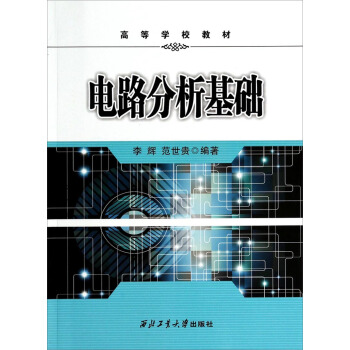
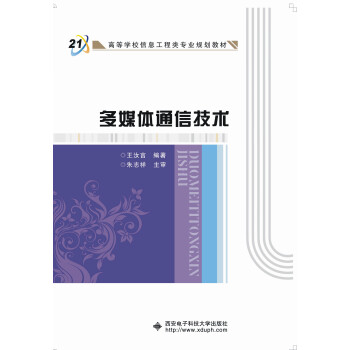


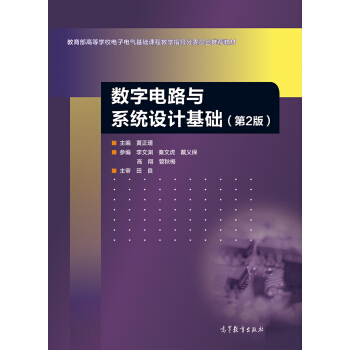

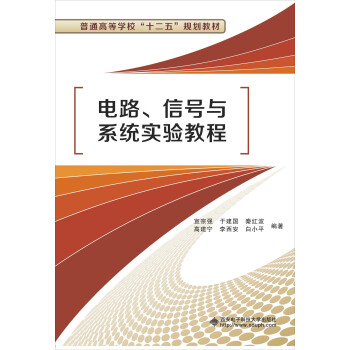

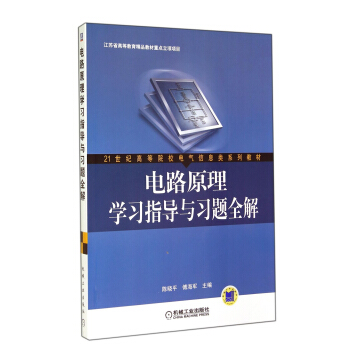
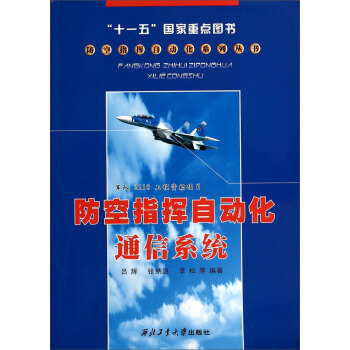


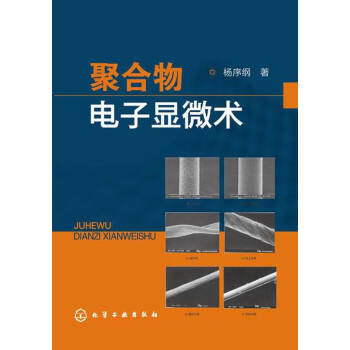
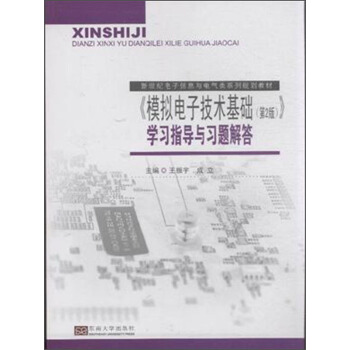
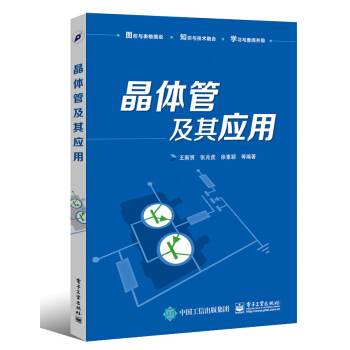
![新兴微纳电子技术丛书:半导体光伏器件 [Semiconductor Photovoltaic Cells] pdf epub mobi 电子书 下载](https://pic.windowsfront.com/11681502/555c68bbN10bcda6f.jpg)

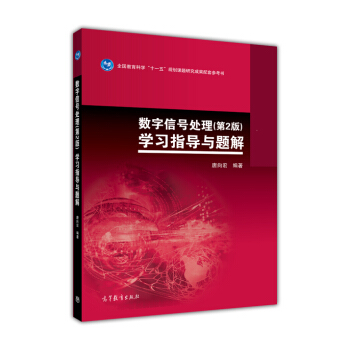
![雷达摄影测量/高等学校教材 [Radargrammetry] pdf epub mobi 电子书 下载](https://pic.windowsfront.com/11710922/559487b4N4500bf19.jpg)